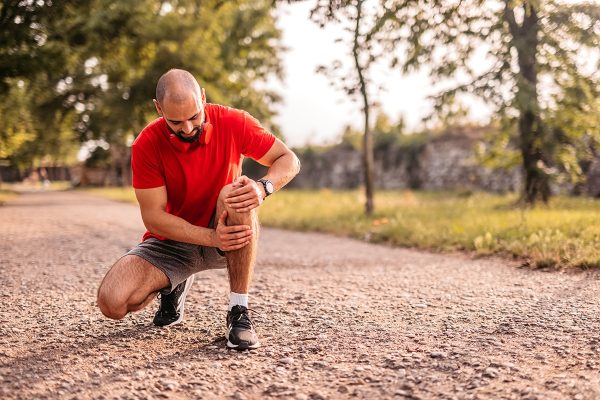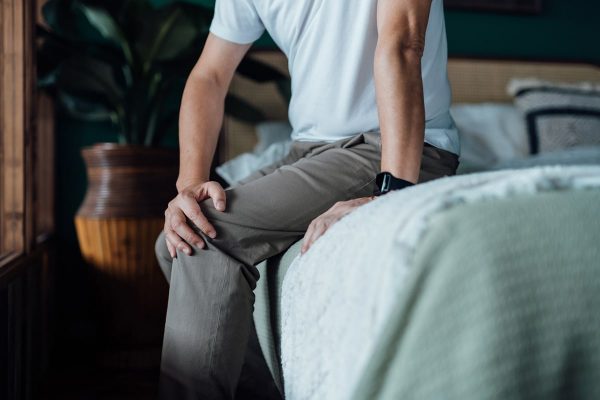
Lateral Collateral Ligament (LCL) sprains are common injuries that can occur during sports activities, accidents, or sudden movements. Understanding the causes, symptoms, and treatment options for LCL sprains is crucial for effective recovery and prevention of long-term complications. In this article, we’ll delve into the intricacies of LCL sprains, explore how CARESPACE Health+Wellness can help, and discuss the collaborative efforts of physiotherapists and chiropractic doctors in managing this condition.
What is an LCL Sprain?
The Lateral Collateral Ligament (LCL) is one of the four major ligaments that stabilize the knee joint. It runs along the outer side of the knee and helps prevent excessive lateral (outward) movement of the joint. An LCL sprain occurs when there is damage or stretching to this ligament due to excessive force or twisting of the knee.
Causes of LCL Sprains:
LCL sprains often result from sudden impacts or movements that put stress on the knee joint. Common causes include:
- Sports Injuries: Activities that involve sudden changes in direction, such as soccer, basketball, or skiing, can increase the risk of LCL sprains.
- Traumatic Injuries: Direct blows to the knee or sudden twisting motions can cause tears or stretching of the LCL.
- Overuse: Repetitive stress on the knee joint, especially in athletes or individuals engaging in strenuous physical activities, can lead to LCL sprains over time.
Symptoms of LCL Sprains:
The symptoms of an LCL sprain can vary depending on the severity of the injury but may include:
- Pain along the outer side of the knee.
- Swelling and tenderness.
- Difficulty bearing weight on the affected leg.
- Instability or a feeling of the knee giving way.
- Limited range of motion.
Treatment Options for LCL Sprains:
Treatment for LCL sprains typically involves a combination of conservative therapies and, in severe cases, surgical intervention. Some common treatment options include:
- Rest, Ice, Compression, Elevation (RICE): Initial management often involves rest, applying ice packs, compression bandages, and elevating the leg to reduce swelling and pain.
- Physiotherapy: Physiotherapists play a crucial role in rehabilitating LCL sprains by designing customized exercise programs to improve strength, flexibility, and joint stability.
- Chiropractic Care: Chiropractic doctors can utilize manual techniques, such as adjustments and soft tissue therapy, to restore proper alignment and function to the knee joint.
- Bracing: In some cases, wearing a supportive brace or splint may help stabilize the knee and prevent further injury during activities.
- Surgical Intervention: Severe LCL sprains that do not respond to conservative treatments may require surgical repair or reconstruction to restore stability to the knee joint.
How CARESPACE Can Help:
At CARESPACE Health+Wellness, our multidisciplinary team of regulated health professionals is dedicated to providing comprehensive care for individuals with LCL sprains. Our client-focused approach involves collaborating with physiotherapists and chiropractic doctors to develop personalized treatment plans tailored to each individual’s needs.
Physiotherapists at CARESPACE employ evidence-based exercise protocols and manual techniques to address muscle imbalances, improve joint mobility, and promote optimal healing of LCL sprains. They work closely with clients to restore function and prevent future injuries through targeted rehabilitation programs. They can also help you know if you have an LCL sprain or if it is another condition.
Chiropractic doctors at CARESPACE specialize in spinal and extremity adjustments, soft tissue therapy, and corrective exercises to address biomechanical dysfunctions contributing to LCL sprains. By restoring proper alignment and function to the musculoskeletal system, chiropractors help alleviate pain and enhance the body’s natural healing process.
Collaborative Care Approach:
The collaborative efforts of physiotherapists and chiropractic doctors at CARESPACE ensure that clients receive comprehensive and coordinated care for their LCL sprains. By combining their expertise and working together as a team, they can address both the underlying causes and symptoms of the injury, leading to faster recovery and better long-term outcomes for clients.
LCL sprains can be debilitating injuries that require prompt and appropriate treatment to facilitate recovery and prevent complications. With the comprehensive care and expertise available at CARESPACE Health+Wellness, individuals suffering from LCL sprains can receive the support they need to regain function, alleviate pain, and return to their active lifestyles. By leveraging the collaborative efforts of physiotherapists and chiropractic doctors, CARESPACE remains committed to helping clients achieve their health goals and live their best lives.
If you have any questions or would like to explore further, please book a free, no-charge online appointment with either myself, Sakshi Rupani, BPT, PT, or another Kitchener physiotherapy practitioner at CARESPACE. We are happy to listen and are here to help!




